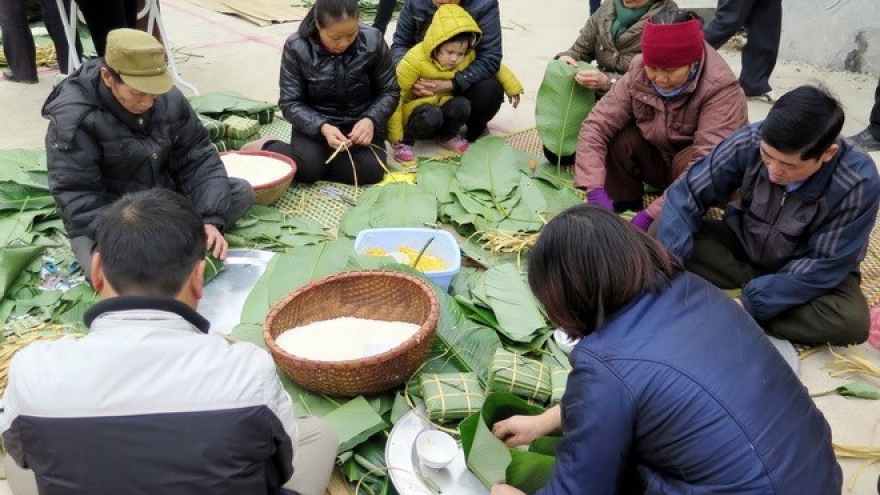How to select the perfect banh chung?
Looking for a delicious sticky rice cake to enjoy over the Lunar New Year? Here are four things you need to know.
 |
Lunar New Year, or Tet, is just around the corner, and for many Vietnamese this means getting together with family and wrapping traditional sticky rice cakes filled with pork and mung beans – banh chung.
Just like any other product out there, there are good banh chung and bad ones, but in many cases, it’s tough to tell until you slice these nicely wrapped delicacies up, take a look at the stuffing or have a bite.
If you're unfamiliar with banh chung, the must-have food for Tet, here are some tips on how to pick a safe and delicious banh chung created by artisans from Dong Village – the oldest traditional village in the northern province of Phu Tho.
Wrapping
Banh chung is traditionally wrapped in large green leaves known as dong (phrynium placentarium), which are related to arrowroot. It typically takes 10-12 hours of simmering until the cakes feel plump and the rice is congealed. Once done, the color of the leaves should turn to a pale yellow-green.
To shorten time and fuel costs, unscrupulous makers may put core parts of batteries into simmer pot together with banh chung. In alkaline environment, the cake’s starch absorbs water easier and therefore the cake softens much quicker - in only about an hour.
However, lead, magnesium and manganese in the batteries may lead to food poisoning, severely damaging internal organs such as liver and kidney.
The batteries’ compounds also make the green leaves turn black-green, dark green or blue-violet green.
The leaves will look fresh while the cake inside may appear more eye-catching, with stuffing not mushy and sticky as it's supposed to be due to shortened cooking time.
Color and smell
The dong leaves help dye the rice inside a cherry-green color. Sometimes to make greener banh chung, people crush and juice galangal leaves to dye the cake, which creates a more natural color and adds fragrance.
 |
In some places, com or green rice flakes, beetroot, purple sticky rice and honey are used to produce all kinds of colors.
However, some may use food coloring instead that give a rainbow of colors. It is definitely not old-school but a modern, widespread practice in Vietnam.
While these food colorings are cheap and offer more options, they can pose health problems such as poisoning or cancer.
It’s not hard to distinguish the artificially colored banh chung. The chemicals make the dong leaves turn a pure green, becoming shinier and toned. The rice also has a darker and more toned color.
More importantly, they won’t have the characterized scent of the dong and galangal leaves.
For naturally colored banh chung, the color may vary from pale to yellow green.
Stuffing
The leaves encase the sticky rice, but in the center there's buttery mung beans and opalescent bits of pork and pork fat. The filling is seasoned with salt, pepper and a touch of fish sauce. For delicious cakes, all ingredients must be fresh and prepared thoroughly.
 |
But it is hard to tell whether the cake you choose has been made from fresh ingredients, unless it is cut to sample.
Good cakes should have a thin crust of sticky rice and lots of stuffing inside. The filling should be mushy and binding in layers, with white fat meat and pink lean pork.
You should ask the seller to cut the cake before deciding whether to buy or not. Ideally, order the cake from reputable stores.
Density
It’s widely accepted that a good banh chung should not feel too soft or too hard.
 |
Tightly wrapped cakes will have a tough texture making them less delicious and harder to preserve. Wrapping them too loose makes it easy for the cake to go soft and moldy.
You should also pick a cake that is dry with intact leaves and no signs of termites or mold. Choosing a fresh banh chung will help you preserve it for longer so the cake will still taste great even after Tet’s finished.

